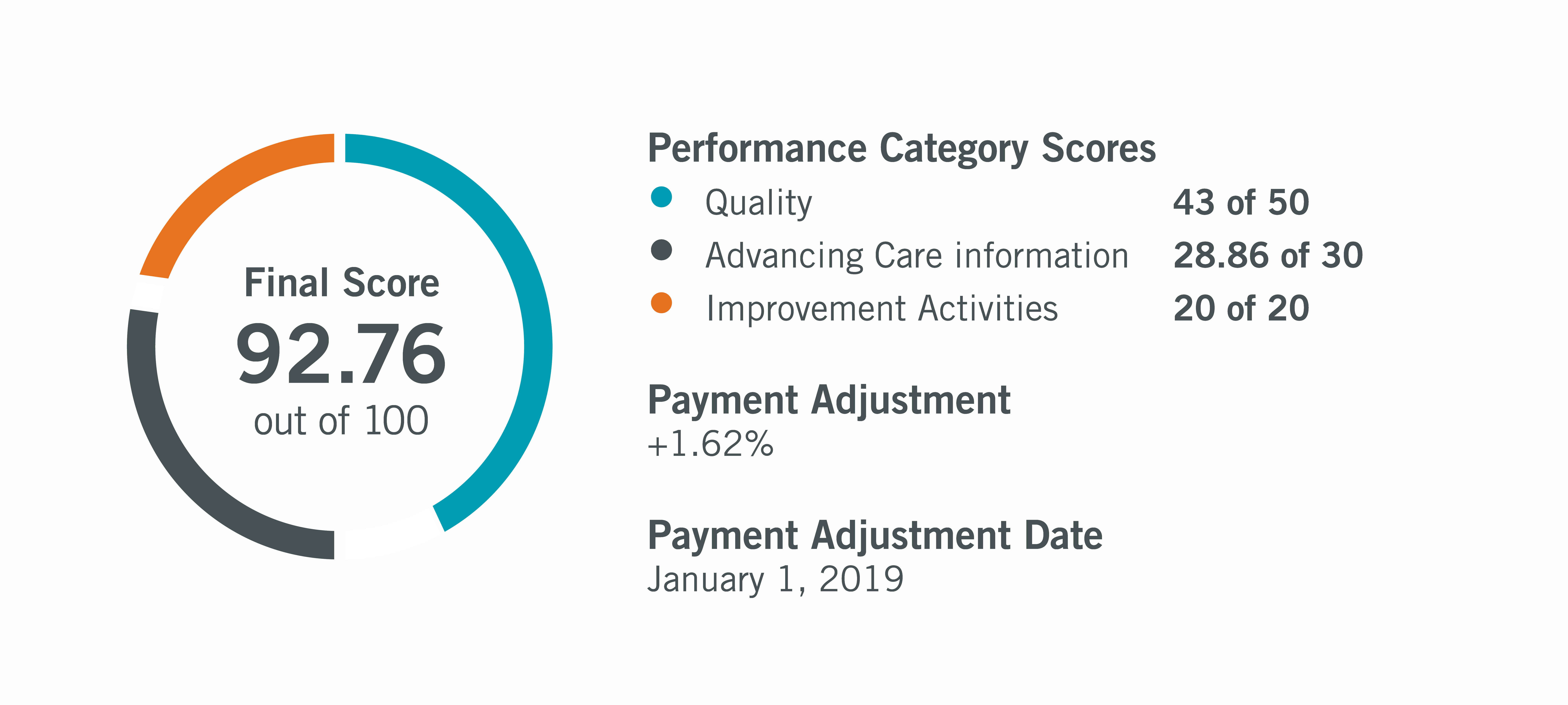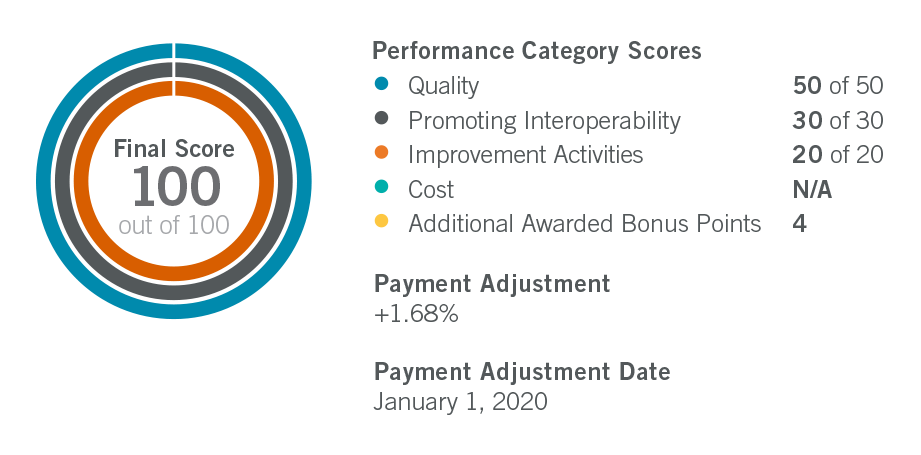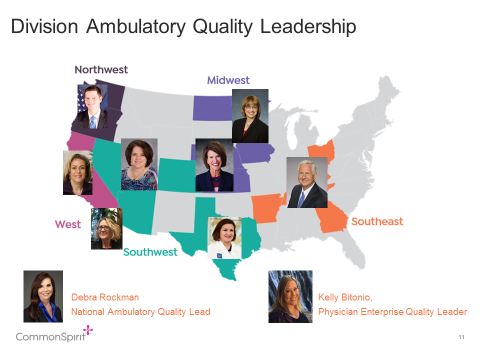CLINICAL INTEGRATION
Winter 2019 Newsletter
Sections:
- New Contracts with Anthem, Blue Cross and United
- SCICN's GPRO Scores Improve for 2018
- Submit Your PI Hardship Exception Application Before Dec. 31
- Care Coordination: Why and How to Refer
- Check Out the New Provider Portal and Help the Community
- Is Your Practice Info Current?
- Physician Enterprise Update and New Ambulatory Quality Council and Charter Established
- New Hypertension Management Campaign Supports Ambulatory Quality Goal
- Advancing a Coordinated, Systematic and Customizable Approach to Care
- 2017 Quality Payment Program Performance Information on Physician Compare Fact Sheet
- Earn CME Credit with These 2019 CME Modules
- Welcome, New Providers
New Contracts with Anthem, Blue Cross and United

SCICN is now contracted in four different value-based agreements (VBAs). VBAs are the foundation of our clinically integrated network’s managed care strategy and provide the opportunity to demonstrate quality and cost effectiveness, while sharing in the cost savings with the payer. The goal of all our agreements is to improve the quality of the members’ care while reducing the total cost of their health care.
If we reduce the total cost of care for our attributed patients, there is an opportunity for shared savings. There is no downside risk with any of these contracts. Our newest contract with United Healthcare recently kicked off in October and is very similar to our existing agreements.
Here’s what you need to know about these contracts:
United Healthcare
- PPO accountable care organization (ACO) with United Healthcare that kicked off in October.
- Attribution is based on claims.
- Quality gate and cost targets impact shared savings.
- You should have received a list of your attributed members to review with a request to address any outstanding care opportunities or allow our Care Coordination team to reach out to them.
- United Healthcare has provided an opportunity for SCICN providers to receive an additional Quality Bonus based on the quality measures listed below:
| PERFORMANCE MEASURE | DESCRIPTION |
|---|---|
| Breast Cancer Screening | Women 50-74 years of age who had a mammogram to screen for breast cancer in the past two years |
| Cervical Cancer Screening | Women who were screened for cervical cancer using either of the three years or age 30-64 who had cervical cytology/human papillomavirus (HPV) co-testing performed every five years |
| Colorectal Cancer Screening | Patients who had appropriate screening for colorectal cancer |
Blue Shield
- PPO accountable care organization (ACO) Total Cost of Health Care Model agreement with Blue Shield.
- You should have received a list of your attributed members to review with a request to address any outstanding care opportunities or allow our Care Coordination team to reach out to them.
- Quality metrics included in this program are listed below and measured by BlueShield via claims data. Additionally, if SCICN reaches shared savings targets and makes improvements in Quality, Blue Shield will increase the payouts to providers. Improvements in Quality are made based on the following quality measures:
| MEASURE TITLE |
|---|
| Childhood Immunization – Combo 10 |
| Breast Cancer Screening |
| Cervical Cancer Screening |
| Colorectal Screening |
| Chlamydia Screening in Women |
| Appropriate Testing for Children with Pharyngitis |
| Appropriate Testing for Children with Upper Respiratory Infection |
| Avoidance of Antibiotic Treatment for Adults with Acute Bronchitis |
| Controlling High Blood Pressure |
| Comprehensive Diabetes Care: Eye Exam |
| Comprehensive Diabetes – HbA1c < 8 |
| Comprehensive Diabetes Care: Medical Attention for Nephropathy |
| Comprehensive Diabetes – HbA1c Testing |
| Antidepressant Medication Management (AMM) Acute Phase and Continuation Phase |
| Annual Monitoring for Patients on Persistent Medications |
| Use of Imaging Studies for Low Back Pain |
Anthem
- PPO accountable care organization (ACO) with Anthem was effective Jan. 1, 2019.
- Attribution is based on claims.
- Quality gate minimum threshold of 50% must be met for the network to achieve shared savings.
- In September, you should have received a list of your attributed members to review with a request to address any outstanding care opportunities or allow our Care Coordination team to reach out to them.
ANTHEM BLUE CROSS PPO ACO: Quality Measures
| Measure Title | Code |
|---|---|
| Medication Adherence: Statins | NQF 0541 |
| Urine Protein Screening | NQF 0062 |
| Hba1c Testing | NQF 0057 |
| Imaging for Low Back Pain | NQF 0052 |
| Asthma Medication Ratio | NQF 1799 |
| Appropriate Treatment for Adults with Acute Bronchitis | NQF 0058 |
| Appropriate Testing for Children with Pharyngitis | NQF 0002 |
| Appropriate Treatment for Children with URI | NQF 0069 |
| Childhood Immunization – MMR | NQF 0038 |
| Childhood Immunization – VZV | NQF 0038 |
| Well Child ages 0-15 months | NQF 1392 |
| Well Child ages 3-6 years | NQF 1516 |
| Chlamydia Screening | NQF 0033 |
| Breast Cancer Screening | NQF 2372 |
| Cervical Cancer Screening | NQF 0032 |
| Potential Avoidable ER Visits | – |
| Brand Formulary Compliance Rate | – |
Dignity Health Ventura Medical Plan
- Care Coordination is available for these members, and SCICN is responsible to provide population health services, including wellness outreach and gaps in care closure.
- The referral process is the same as your current Anthem PPO contract.
- For employees to receive the highest level of coverage, referrals should be made to Tier-1 SCICN providers.
- To find other SCICN Tier-1 providers, please visit the SCICN website at www.scicn-vc.org and go to the “Find a Provider” section located on the homepage.
- Quality Measures: SCICN participating physicians need to help ensure this population has appropriate screenings performed and that based on specific diagnosis, quality measures are met. Please make sure you are billing with the appropriate corresponding codes as listed below. The network will be graded on the following measures:
| METRIC | DETAIL | CODE | ICD-10 CODE | CPT CODE |
|---|---|---|---|---|
| Diabetes – Hemoglobin A1c (HbA1c) Poor Control (>9) | Percentage of patients 18-75 with a diagnosis of diabetes who had hemoglobin A1c>9 during the measurement period | NQF 0059 | E11 | G8015 – Diabetic patient with the most recent hemoglobin A1c level (within the last 12 months) documented as greater than 9% |
| Hypertension: controlling high blood pressure | Percentage of patients 18-85 with diagnosis of hypertension and whose blood pressure was adequately controlled (<140/90) during the measurement period | NQF 0018 | I10 | G8950 – Pre-hypertensive or hypertensive blood pressure reading documented, and the indicated follow-up is documented G8951 – Pre-hypertensive or hypertensive blood pressure reading documented, indicated follow-up not documented, documentation the patient is not eligible G8952 – Pre-hypertensive or hypertensive blood pressure reading documented, indicated follow-up not documented, reason not given |
| Breast Cancer Screening Rate | Percentage of women 50-74 years of age who had a mammogram to screen for breast cancer | NQF 2372 | Z12.31 | 77052 – Computer-aided detection (computer algorithm analysis of digital image data for lesion detection) with further review for interpretation; screening mammography (List separately in addition to code for primary procedure) 77057 – Screening mammography, bilateral (2-view film study of each breast) 77063 – Screening digital breast tomosynthesis; bilateral (List separately in addition to code for primary procedure) (Use this as an add-on code to G0202 when tomosynthesis is used in addition to 2-D mammography) G0202 – Screening mammography, producing direct 2-D digital image, bilateral, all views. |
If you have any questions or would like more information about these agreements, please contact Jocelyn Silerio at 805-988-7130 or [email protected].
SCICN's GPRO Scores Improve for 2018

Our MSSP GPRO scores are in, and SCICN’s focus on quality, advancing care information and improvement activities has resulted in a score of 100 (out of 100) for 2018. This is an impressive increase over 2017’s 92.76.
In every measure of quality, SCICN improved over the previous year’s metrics.
2017

2018


As a network, we should be proud of all we have accomplished. Thank you for all of your hard work.
Submit Your PI Hardship Exception Application Before Dec. 31

The QPP Promoting Interoperability window for exception applications is open now until Dec. 31 for measurement year 2019.
If you feel you qualify for an exception this year:
- If new exception: Submit an application prior to Dec. 31.
- If filed for an exception last year: Check your status on the QPP website using your NPI number
- If the exception is still valid, you do not have to do anything else.
- If the exception is no longer valid: Submit a new application if you feel the exception is still warranted.
MIPS-eligible clinicians, groups and virtual groups may submit a Promoting Interoperability Hardship Exception Application citing one of the following specified reasons:
- You’re a small practice.
- You have decertified EHR technology.
- You have insufficient internet connectivity.
- You face extreme and uncontrollable circumstances such as disaster, practice closure, severe financial distress or vendor issues.
- You lack control over the availability of CEHRT.
If you’re already exempt from submitting Promoting Interoperability, you do not need to apply for this application.
For more information on MIPS exceptions, you can download the FAQs.
Care Coordination: Why and How to Refer

Many types of patients can benefit from Care Coordination, which strives to meet the comprehensive medical, behavioral health and psychosocial needs of each individual patient while promoting high-quality care and cost effective outcomes.
To help you care for complex patients, the Care Coordination team is taking a proactive approach, reviewing daily reports on high utilizers and high-risk patients — in particular, patients with three or more ED visits in a six-month period, patients who are readmitted within 30 days, any hospital admissions and those with certain chronic diseases as their chief complaint(s).
In these cases, the team screens to determine the patient’s need for Care Coordination, reviewing the patient’s medical chart as well as available information on their social determinants of health. They will reach out to the patient — with communication to the primary care physician as well — to explain the Care Coordination program and invite them to enroll.
Patients may also self-refer to the program, and as a physician, you may recommend that they enroll in Care Coordination.
Better Understand Care Coordination
You can find the Care Coordination Toolkit and additional information on the secure Provider Portal under Network Highlights. These materials will help you and your staff better understand the services provided by Care Coordination and their importance in improving patient health and satisfaction.
Plus, be sure to send patients to the SCICN-VC website to learn more as well.
To learn more about the Care Coordination program, please call 805-256-1380, fax 805-256-1378 or email us at [email protected].
Check Out the New Provider Portal and Help the Community

The SCICN-VC website includes an updated Provider Portal that’s easier to navigate and contains enhanced features.
Now is the perfect time to explore the portal, too, because for every new profile created on the Provider Portal between Dec. 16 and Jan. 17 (physician, nurse, office manager), we will donate to the local 211 organization. 211 connects millions of Americans to social services, resources and information to address needs from housing instability to food insecurity to crisis.
Here’s what you need to do to help 211 and take advantage of the benefits of the Provider Portal.
- Log in at https://secure.scicn-vc.org/login.aspx. (This can be found under the SCICN-VC Physicians tab at scicn-vc.org.
- Create an account.
In the Provider Portal, you can access secure documents, tools and resources, including:
 Provider Dashboard (Login-only Access) Provider Dashboard (Login-only Access) |
|
|---|---|
| Search Tools | Physician List |
| Conical Integration Tools | Athena Health Info Exchange |
| Provider Practice Data | Coming Soon |
| Forms | IT Request SFTP Request Care Coordination Request |
| Provider Resources | Clinical Spotlight Clinial Protocols BPCI Physician Spotlight |
| News, Events & Communications | Archived Physician Emails Blog News & Announcements Events Newsletters |
| ACO Information | Contact ACO/Help Desk Contact IT Contact Network |
Is Your Practice Info Current?

Please remember to notify us of any practice changes (new providers, providers leaving, etc.).
Contact Jocelyn Silerio at 805-988-7130 or [email protected] with updates.
Physician Enterprise Update and New Ambulatory Quality Council and Charter Established

In July, the CommonSpirit Health Physician Enterprise Ambulatory Quality Steering Committee formally approved the CommonSpirit Health Ambulatory Quality Council charter and finalized its membership list. The Council will work in collaboration with the CommonSpirit Health National Clinical Quality Program to:
- Establish strategic ambulatory quality goals and objectives aligned with CommonSpirit’s mission, vision, strategic plan and the IHI Triple Aim.
- Recommend creation of future national quality measures that are highly reliable and actionable.
- Collaborate and disseminate education, knowledge and tools that will reduce variations in care and improve ambulatory clinical quality.
Council membership includes:
| Voting Members | Non-Voting & Ad hoc Members |
|---|---|
| Gary Greensweig, DO (CPE for PE) Tracy Sklar (System Quality Lead) Debra Rockman (Ambulatory Quality Lead) Barbara Martin (APP Leader) Jim Reichert, MD or Designee (Clinical Analytics) Viren Bavishi, MD (Market Medical Group Leader) Carol Henrichs (Division Quality Leader) Melanie Radko (Division Quality Leader) Ben Chaska, MD (Division Operational Leader) Dan Wiens (Division Operational Leader) Nick Stine, MD (National Population Health Lead) |
Kelly Bitonio, Physician Enterprise Quality Keri Hackendahl, Ambulatory Patient Experience Michelle Edwards DNP, FACHE, FAANP Barbara Pelletreau, Patient Safety Lead Ben Balatbat, MD, Market Medical Group CMO Paul Rains, Behavioral Health Lead Karen McConnell, Ambulatory Pharmacy National Payer Strategies Lead, or designee Executive Sponsors: Bob Wiebe, Kathy Sanford, Bruce Swartz A member of the national clinical analytics team A member of the business intelligence team Market clinic administrator(s) |
With representation and clinician input from across CommonSpirit Health, the Council will seek to improve patient outcomes and standardize and coordinate ambulatory quality programs across the enterprise.

To support this work, leaders across the physician enterprise have been designated as accountable for quality within their respective divisions.
Division Quality Leaders include:
Michael Anderson – Northwest Division
Melanie Radko, Cindy Garrett – West Division
Lisa Icard, Heather James – Southwest Division
Mary Helland, Carol Henrichs – Midwest Division
Dr. Greg Anderson – Southeast Division
New Hypertension Management Campaign Supports Ambulatory Quality Goal

For the first time ever, an ambulatory quality measure will be included as part of the FY2020 CommonSpirit National Clinical Goals. Tasked with identifying a meaningful ambulatory measure that is capable of being shared and measured across CommonSpirit Health, a team of clinicians and quality leaders convened and selected Control of hypertension for patients aged 18-85 to maintain blood pressure at less than 140 systolic less than 90 diastolic.
Better control of blood pressure has been shown to significantly reduce the probability of downstream sequelae. In clinical trials, antihypertensive therapy has been associated with reductions in stroke incidence (35-40%), myocardial infarction (20-25%) and heart failure (>50%).
To support this goal, the Physician Enterprise Ambulatory Quality Council has developed a campaign centered on hypertension management. The initiative will include a variety of communications that provide context and clarity regarding how the goal was determined, how it will be measured and reported on and how CINs can help further these efforts.
In addition, a number of resources and tools are available, including but not limited to:
- Evidence-based information for provider and staff education and communication
- Improvement strategies with supporting tools
- Collaborative activities to share and scale best practices
Recently released resources include a Hypertension Management Toolkit, Hypertension Management Ambulatory Quality Measure FAQs and hypertension-related updates to the Clinical Resource Guide. Check out all of the materials on our SharePoint page, and learn more about the hypertension goal on our FAQ page.
Hypertension Town Hall Slides Are Available for Download
The slide deck from our recent Hypertension Town Hall is now available on the secure provider portal. During the call, we discussed hypertension as our first national ambulatory clinical goal and provided an overview of the national measure as well as our enterprise baseline performance and HTN management improvement strategies. If you missed the Town Hall or if you wanted to review anything from the meeting, download the slides today.
Advancing a Coordinated, Systematic and Customizable Approach to Care

In February of 2019, CommonSpirit Health officially began its work with five transformational strategies designed to create a new system of health care and advance us toward becoming a “Clinical Enterprise.”
One of the transformational strategies, “Advance a coordinated, systematic and customizable approach to serving those with acute, chronic and complex conditions,” speaks directly to the Institute for Healthcare Improvement’s Triple Aim for Health Care, which describes improved outcomes, improved patient experience, improved efficiency and lower cost.
Sixty percent of adults in the U.S. have a chronic disease, and 42% of adults have two or more chronic diseases. According to the Centers for Disease Control and Prevention (CDC), chronic disease accounts for approximately 75% of the nation’s aggregate health care spending. Americans with five or more chronic conditions make up 12% of the population, but account for 41% of total healthcare spending1.
The implementation of a coordinated, systematic and customizable approach to serving those with acute, chronic and complex conditions across the entirety of CommonSpirit Health is not a single event, but a journey. In order to be successful, we will start with the basics, building a foundational structure to support future iterations and allow a broadened focus for quality improvement efforts as we progress forward. The journey will involve a focus, including but not limited to primary care, care across the continuum, coordinated communication with the involvement of Community Health Teams and the application of new and innovative technology.
Improving overall quality of life for patients, their families and communities is the underlying purpose for all of this work as we strive toward the development of a true clinical enterprise.
National Center for Chronic Disease Prevention and Health Promotion, 2019.
Camden Coalition, 2012. Camden Coalition, 2012.
2017 Quality Payment Program Performance Information on Physician Compare Fact Sheet

The Centers for Medicare & Medicaid Services (CMS) has added new performance information to the Physician Compare website.
The Physician Compare website was created in December 2010 as required by the Affordable Care Act (ACA) of 2010. The Medicare and CHIP Reauthorization Act of 2015 (MACRA) specified additional requirements for the Physician Compare website.
Medicare patients and caregivers are able to use the Physician Compare website to search for and compare clinicians and groups who are enrolled in Medicare, as shown in this patient story video.
2017 Quality Payment Program Performance Information Newly Added to Physician Compare
As part of CMS’s continued phased approach to public reporting on Physician Compare, CMS is publicly reporting a subset of the 2017 Quality Payment Program (Year 1) information submitted under the Merit-based Incentive Payment System (MIPS) and Alternative Payment Models (APMs).
Information on the Physician Compare website is publicly reported on clinician and group profile pages and in the Physician Compare Downloadable Database on data.medicare.gov.
What’s on Physician Compare profile pages?
The Physician Compare website has profile pages for clinicians and groups who are enrolled in Medicare. Profile pages include general information useful to Medicare patients and caregivers, such as clinician specialties, practice locations and phone numbers. We recently added certain 2017 Quality Payment Program performance information to clinician and group profile pages to help Medicare patients and caregivers make informed decisions about the clinicians and groups they visit. Only performance information that met our established Physician Compare public reporting standards (§414.1395(b)) and resonated with Medicare patients and caregivers, as determined by user testing, was selected for public reporting on Physician Compare profile pages.
The information on profile pages for MIPS-eligible clinicians and groups includes:
- 12 MIPS-quality measures reported by groups and displayed as measure-level star ratings on group profile pages;
- 8 Consumer Assessment for Healthcare Provider and Systems (CAHPS) for MIPS summary survey measures displayed as top-box percent performance scores on group profile pages;
- 6 Qualified Clinical Data Registry (QCDR) quality measures reported by groups and displayed as percent performance scores on group profile pages;
- 11 QCDR-quality measures reported by individual clinicians and displayed as percent performance scores on individual clinician profile pages.
What is available in the Physician Compare Downloadable Database?
The Physician Compare Downloadable Database is an online collection of datasets on data.medicare.gov. The primary audience of the Physician Compare Downloadable Database is clinicians, groups and third-party data users (e.g. third-party intermediaries, researchers).
The Downloadable Database was updated with 2017 Quality Payment Program performance information mid-year 2019. The Downloadable Database will include all performance information from profile pages, additional MIPS measures that were not selected for public reporting on profile pages and final scores and performance category scores (quality, advancing care information, improvement activities) under the Merit-Based Incentive Payment System. A subset of the 2017 advancing care information transition measures that meet public reporting standards will also be included in the Downloadable Database.
The Physician Compare Downloadable Database will include utilization data, which provides information on services and procedures provided to Medicare beneficiaries by clinicians. A subset of the 2016 utilization data will be included in the Downloadable Database when it is updated.
How is Alternative Payment Model (APM) performance information included on Physician Compare?
Physician Compare is publicly reporting information about 2017 APM participation in the following ways:
- Next Generation or Medicare Shared Savings Program (Shared Savings Program) ACOs will continue having profile pages with measure-level performance scores for a subset of their quality measures on Physician Compare;
- Groups that participated in Shared Savings Program ACOs will have an indicator of APM participation on their group profile page. Physician Compare will also link groups to their affiliated ACO profile pages;
- If clinicians and groups participated in the APMs listed below, they will have an indicator of APM participation on their profile pages. Bundled Payments for Care Improvement (BPCI) Model 2, Model 3 and Model 4:
- Comprehensive Joint Replacement (CJR)
- Comprehensive End-Stage Renal Disease Care (CEC)
- Comprehensive Primary Care Plus (CPC+)
- Frontier Community Health Integration Project Demonstration
- Independence at Home Demonstration
- Initiative to Reduce Avoidable Hospitalization
- Million Hearts: Cardiovascular Disease Risk Reduction
- Oncology Care Model
- Transforming Clinical Practice Initiative
Learn More
Visit the Physician Compare Initiative page to find more resources about Physician Compare and public reporting.
For questions or comments about Physician Compare and public reporting, contact the Physician Compare support team at [email protected].
For questions or comments about the Quality Payment program, contact the Quality Payment Program Help Desk at [email protected].
Subscribe to the Physician Compare e-News to stay up to date and get the latest information about Physician Compare, webinars and much more.
Earn CME Credit with These 2019 CME Modules

Want to learn more about the Merit-based Incentive Payment System (MIPS) and earn continuing medical education (CME) credits at the same time? CMS is offering six new CME modules. Log into your Medicare Learning Network (MLN) account (if you don’t have one, create it here). Once you are logged in, type the name of the module into the search bar at the top of the website to find it.
The new MIPS CME modules are:
- Quality Payment Program 2019 Overview – Provides information on the origin and objectives of the program as well as an overview of the MIPS and Advanced Alternative Payment Models.
- Quality Payment Program Merit-based Incentive Payment System (MIPS): Participation in 2019 – Details MIPS eligibility and participation options, including the new opt-in policy, and how to report MIPS data.
- Quality Payment Program Merit-based Incentive Payment System (MIPS): Quality Performance Category in 2019 – Explains the requirements, data submission and collection types and scoring for the Quality performance category.
- Quality Payment Program Merit-based Incentive Payment System (MIPS): Promoting Interoperability Performance Category in 2019 – Provides information on reporting requirements, measures and reweighting for the Promoting Interoperability performance category.
- Quality Payment Program Merit-based Incentive Payment System (MIPS): Improvement Activities in 2019 – Explains the requirements, reporting steps and scoring for the Improvement Activities performance category.
- Quality Payment Program Merit-based Incentive Payment System (MIPS): Cost Performance Category in 2019 – Provides information on new measures, attribution and scoring for the Cost performance category.
Welcome, New Providers

Center for Diabetes Endocrinology & Nutrition, Inc.
- Gulnar Poorsattar, MD – Endocrinology & Metabolism
Inpatient Specialists of California
- Jatin Chhabra, MD – Hospitalist
- Oluyemi Odunusi, MD – Hospitalist
- Nina Yaftali, DO – Hospitalist
- Michael Eden, DO – Hospitalist
- Elnaz Rakhshan, MD – Hospitalist
- Billy Hour, MD – Hospitalist
- Michael Ngumi, MD – Hospitalist
Dignity Health Medical Group
- Lawrence Crisostomo, NP
- Ivonne Reyes, FNP
- Meaghan Pinheiro, MD – Obstetrics & Gynecology
Ventura Orthopedics Medical Group
- Andrew Armstrong III, PA-C
Cardiology Associates Medical Group
- David Philips, MD – Interventional Cardiology
California Managed Imaging Medical Group
- William Millard II, MD – Diagnostic Radiology
You Could be Featured Here
We believe in the power of SCICN-VC providers having a connected community. When providers know and understand one another’s specialties, truly great collaborations are possible. That’s why we want to regularly spotlight our SCICN-VC providers in this newsletter, on our website and on our social channels too. If you’re interested in letting other providers know about you, please reach out to Jocelyn Silerio at 805-988-7130 or [email protected].

